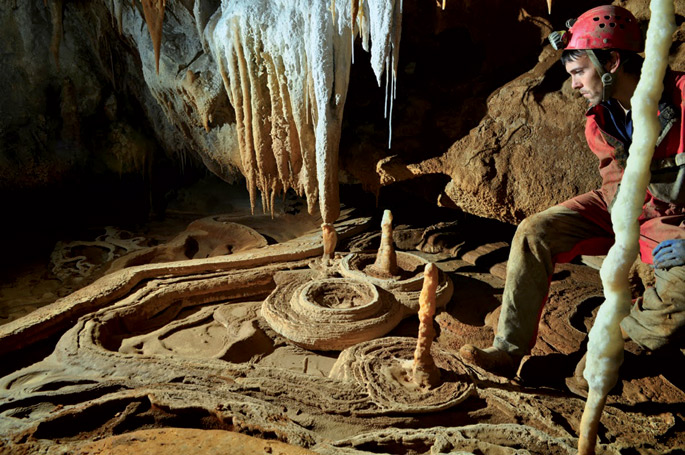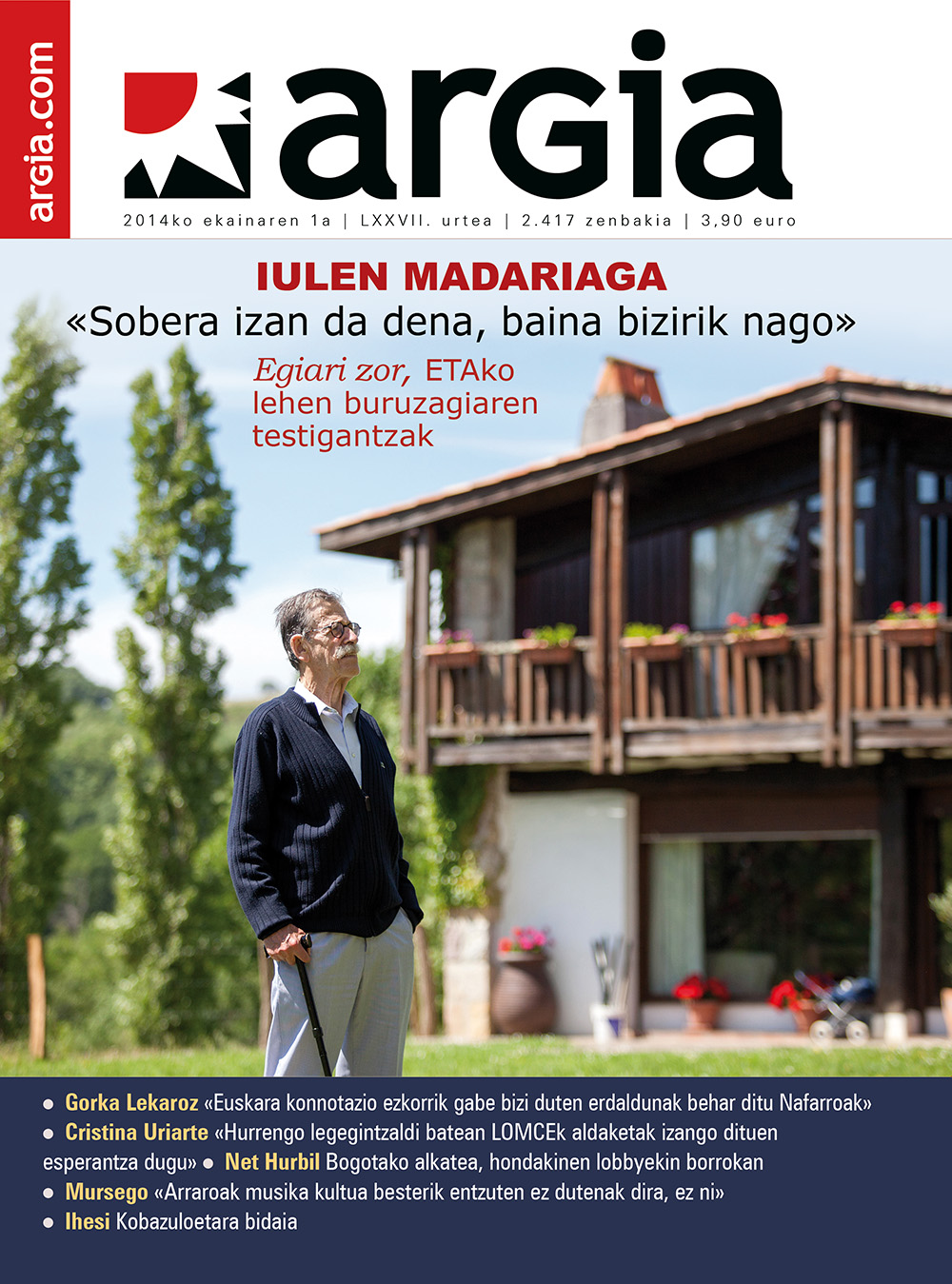It's not the most comfortable, but it's worth it
- There are thousands of caves in the Basque Country, but few are the best known. And even less – they do not reach the dozen – those prepared for the visit. To enjoy others, you usually need a little bit more or less trained in speleology. It's not comfortable, the material is expensive, it can be dangerous -- but if you put the worm inside, it will cost you to leave.

The omniscient Wikipedia teaches us that the word karst comes from German. In particular, it is the German name of the Kras or Carso region between Slovenia and Italy. Currently, the term is used to refer to a particular type of landscape, and it is also said that karst is the landscape that occurs when water dissolves the limestone, which the geologist of the UPV/EHU, Arantza Aranburu considers a myth that must be broken: “Almost any stone can be converted into karst if it is given time and enough acidification of water.” Having done this nuance, Aranburu pointed out that in the Basque Country we have many limestones that are easy to dissolve. This inevitably leads to karst and, together with karst, caves. Oh, yeah!
No concrete figures
There are thousands of caves in our land. Exactly how much? I didn't know. Anyone who has ever tried to do so knows how difficult it is to provide unified data from all over the Basque Country in any area. Caves are no exception. As explained by Javi Moreno, a member of the College of Basque Espeleologists, his association has elaborated the catalogue of the caves of Álava, Bizkaia and Gipuzkoa: About 5,600. In the last issue of the journal Karaitza, edited by the College, the classification of all of them appears and a desire: “Let’s see if the Navarros groups cheer up and put together the data of all to form the catalog of cavities of Hego Euskal Herria.”
Easily guessed: In Navarre there is no catalogue at the moment, although, according to Moreno, some have already started to work to remedy the lack. We can say the same thing about Ipar Euskal Herria, that is, there is no data.
You can't give an exact figure, it's not just a result of the division of Euskal Herria. There's also a reason related to speleology: you find caves constantly. And not only small holes of a few meters, but also galleries of many kilometers in length.
They're not an easy place to be
“Most don’t have a name,” explains Javi Moreno, “we name them with a code.” Very few have more than a hundred meters, but the longer ones are very long. They can reach up to 50 kilometers. The speleologist who enters into them will have to make a plan for a few days, because otherwise there is no time to see everything. Caves, in general, are not an easy place to move less. “When we make 200 or 300 meters in an hour we say we are talking about high speed,” Moreno said.
We are, of course, talking about highly qualified speleologists. Technical access skills are required in most caves – the entrance is often a deep well – and the mere fact of being inside is an obstacle. Many people are worried about walking in the dark. “I don’t know why,” says Javi Moreno. And many times you have to walk through grooves that barely fit.
This does not mean that the touristic caves are the only alternative for those who want to delve into the secrets of speleology. There are caves without doors that deserve a visit. “People are also going to spend the day on those who are not prepared for tourism,” says Arantza Aranburu, “the local knows well what it has around, and also historically caves have been used to protect livestock from heat sap in summer.”
Aranburu and Moreno highlight some caves where you can go on a guided tour: The cave of Baltzola, in Dima; Supelegor, in the vicinity of Gorbea; Los Goros, in the Alavesa town of Oto Goien... In the latter case, care must be taken, as it is an active agent, as Aranburu explained. In other words, if the water level rains, it can suddenly rise and catch the one inside. Enter, then, only in rainless days.
Although the access is easy, in the realm of darkness it is convenient to illuminate, as the example of Los Goros shows. Our two experienced interlocutors in this kind of task speak of carrying more than one flashlight and, if you go alone, of communicating to someone our intentions.
Be careful, also by the cave
But you don't just have to take care of your own health, but you also have to look after the cave. The main reason for the shortage of tourist caves is the need to protect what is inside. It takes years to analyze whether a cave can be the victim of a crowd. “We have to know how to ‘breathe’ the cave,” says Arantza Aranburu, “and how CO2 affects our breath.”
But the risk goes beyond the respiratory. Aranburu tells the case of a famous tourist cave in Extremadura (Spain) in which a child vomited unwilling during a visit. It was the last visit on Friday, and they decided to leave the cleaning work for Monday morning. The weekend was enough for the bacteria to break the fragile balance in the area; today, the cave is closed and even with antibiotics have not managed to eliminate the bacteria.
What about the child who suffered belly pain is forgiving, other things not so much. “Unfortunately, sometimes we enter an unknown cave and soon after, when we come back, we see that someone has done a carnage,” says Javi Moreno. Taking the stalactite and leaving the trash in place is not the best plan to enter the cave, even less considering that the stalactite itself will turn into garbage a couple of days later. According to Aranburu, the things in the cave are only enchanting within it.











